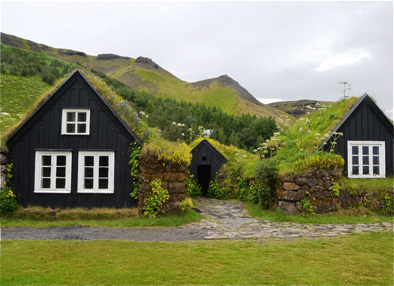- BY admin
- POSTED IN Latest Blogs
- WITH 0 COMMENTS
- PERMALINK
- STANDARD POST TYPE

History
Sod roofs have been part of Scandinavian structures for generations. These are homes where sod (or grass cover) is planted on top of layers of birch wood. The style is mostly associated with log cabin type dwellings. However, it wasn’t until Germany in the 1960s that the modern take on “green” roofs used for environmental purposes came into vogue. Now, most of Europe has government incentives and encourages builders to use the technique.
What is Green Roofing?
Modern green roofs involve planting local vegetation on top of waterproofing membranes that are affixed to the roof of a building. There are layers of material designed to house roots and create irrigation and drainage. Some structures are completely covered with vegetation, while others may only be partially covered. Green roofs fall into two main categories, intensive and extensive.
 Intensive
Intensive
Intensive green roofs involve more “intensive” maintenance and care. Such structures that hold gardens or parks on the roofs are considered intensive. Often these roofs are accessed by people for pleasure. To simplify the definition, if the type of vegetation planted on the roof needs constant care be it weeding, watering or feeding, it is intensive. This style also requires more layers to promote proper drainage and irrigation, so more often intensive roofs are flat roofs.
Extensive
Extensive roofs are closer to the original sod style roof. The area is only accessed for maintenance, and, in general, only once or twice a year. It is given fertilizer or weeded, but otherwise left to its own. Often these roofs are pitched roofs, so a thinner layer of material is needed to sustain the vegetation, as the natural slope will allow for proper drainage.
Benefits
Green roofs are believed to have a number of positive impacts on the environment such as reducing stormwater runoff, creating a habitat for wildlife, filtering pollutants and lowering the heat urban impact. Financially, people benefit from the reduced heating and cooling costs, roof lifespan is dramatically lengthened, as well as being eligible for both federal and state tax breaks.
Disadvantages
Costs for installing green roofing is considerably high. The waterproofing layers along with beefing up the support structure adds up quickly. Plus, unlike a typical roof, there is considerable more maintenance. Some people worry the vegetation will suffer from lack of rainfall. However, the way the drainage is designed, the roof will survive lengths of drought. And since local vegetation is used, it will also survive winter months.
For more information about green roofs, contact Buckley Roofing Services we can help you find solutions to your needs.
